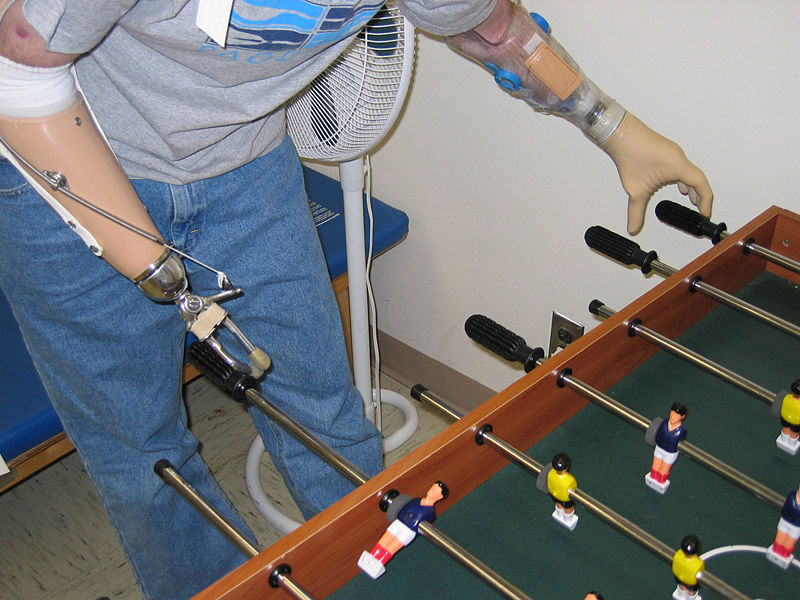The first prosthetic hand has been developed that allows its user to actually feel what they are touching, in real time. Dennis Sorensen from Denmark became the first amputee to use this new prosthetic hand,  and experience a restored sense of touch.
and experience a restored sense of touch.
Artificial hands that can open and close have been around for a while, but because there is no feedback, users have to be very careful not to accidentally crush the object they are holding. Now Stanisa Raspopovic and his team at EPFL (Switzerland) and SSSA (Italy) have developed technology to allow a user to detect the shape and texture of an object, as well as how hard they are gripping it.
They do this by detecting electrical changes generated as the tension in artificial tendons on the hand changes. A computer algorithm converts these into pulses that can be sent along nerve cells. Electrodes were implanted into Dennis' arm to receive the signals and send them onwards to the brain. Although the scientists were worried the nerves in Dennis' stump would no longer be sensitive, having not been used in over 9 years, the system worked well. He was also able to control the movement of the prosthetic hand by contracting different muscles remaining in his stump.
Dennis was blindfolded, and wearing headphones so he couldn't use his other senses, and was asked to do various tasks with the prosthesis. He was able to learn, over the course of a week, to apply different amounts of pressure with the fingers, to grasp and manipulate different kinds of objects, and to detect the properties of objects.
The hand is still a way away from commercial use, and after a week of trials, Dennis is back to using a standard prosthetic. The electronics need to be miniaturised to make the hand portable, and the sensory technology will be fine-tuned.
- Previous Mapping the milky way
- Next Breast milk antibody benefits










Comments
Add a comment